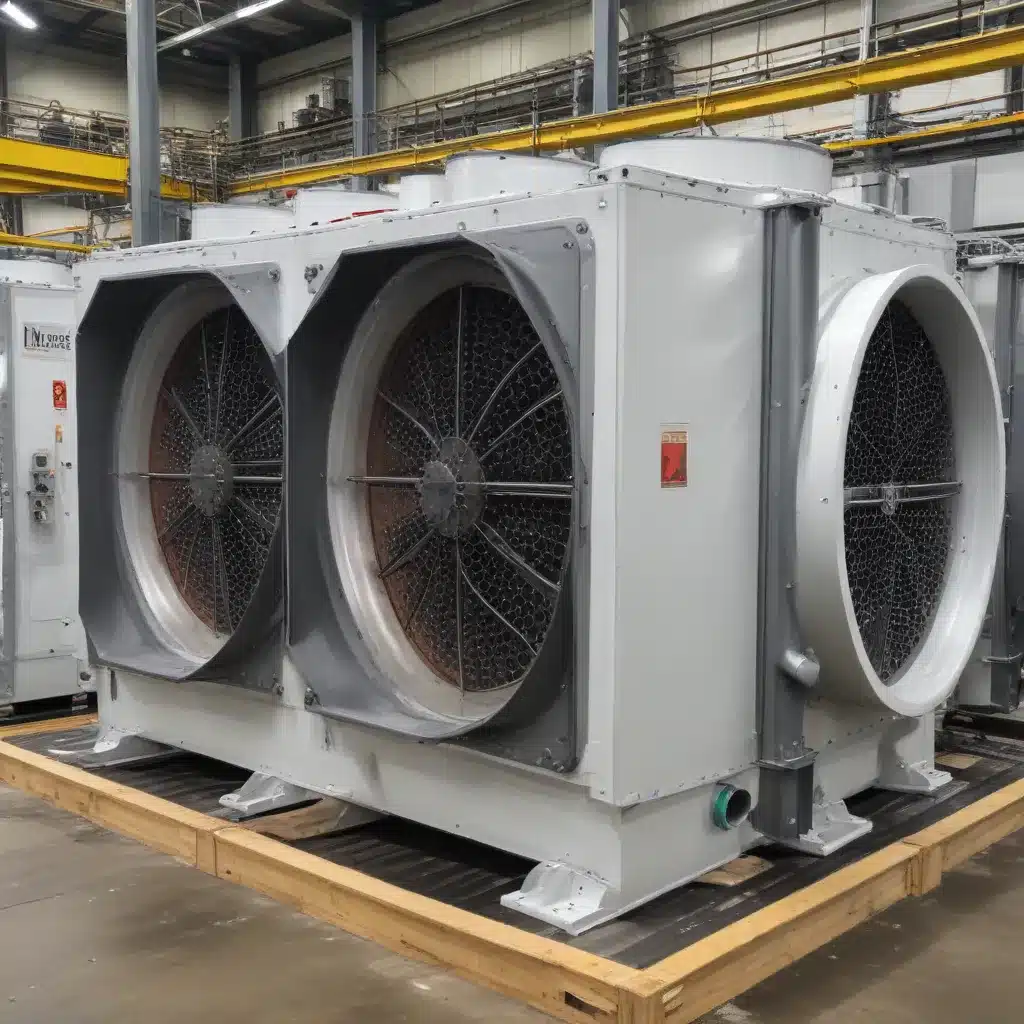
The Untapped Treasure Trove of Industrial Waste Heat
In today’s rapidly evolving industrial landscape, where sustainability and energy efficiency are paramount, the untapped potential of waste heat recovery stands as a transformative opportunity. According to a recent McKinsey & Company study, over 3,100 thermal terawatt-hours (TWhth) of usable waste heat are currently being overlooked across various industries. To put this staggering figure into perspective, this amount is akin to the energy generated from all the natural gas imported by the European Union.
The energy-intensive sectors of oil and gas, power generation, cement, and steel have particularly significant waste heat recovery potential. In these industries, a substantial portion of the energy input, estimated at 20-50%, is lost as waste heat in the form of hot exhaust gases, cooling water, and heat from hot equipment surfaces and products. Capturing and repurposing this wasted energy can unlock substantial benefits, from reduced energy consumption and greenhouse gas emissions to improved operational efficiency and cost savings.
Harnessing the Power of Air-Cooled Heat Exchangers
Amid the growing emphasis on sustainability and the need to conserve precious water resources, air-cooled heat exchangers are emerging as a viable and increasingly attractive solution for industrial waste heat recovery. Unlike traditional water-based cooling systems, air-cooled heat exchangers utilize ambient air as the cooling medium, making them an ideal choice for applications where water scarcity or quality concerns are a challenge.
These versatile heat exchangers can be deployed across a wide range of industrial settings, from oil refineries and cement plants to food processing facilities and power generation stations. By effectively capturing waste heat from various process streams, air-cooled heat exchangers enable the recovery and repurposing of this energy, driving significant improvements in overall energy efficiency and environmental sustainability.
Design Innovations and Performance Enhancements
The air-cooled heat exchanger market has witnessed remarkable advancements in recent years, with engineers and technologists continuously pushing the boundaries of design and performance. From improved fin geometries and materials to advanced heat transfer coatings and innovative tube configurations, these heat exchangers are becoming increasingly efficient, reliable, and cost-effective.
One notable innovation is the development of modular air-cooled heat exchanger systems. These modular designs allow for easy scalability, enabling industrial facilities to tailor the heat recovery capacity to their specific needs, whether it’s a small-scale application or a large-scale operation. By deploying these modular units directly at the waste heat source, companies can optimize energy utilization and minimize distribution losses, further enhancing the overall efficiency of their waste heat recovery efforts.
Boosting Maintenance and Reliability
Proper maintenance and reliability are critical factors in ensuring the long-term performance and cost-effectiveness of air-cooled heat exchangers. Regular inspections, cleaning, and preventive maintenance protocols are essential to maintain optimal heat transfer efficiency and minimize downtime.
Innovative cleaning techniques, such as automated tube cleaning systems and high-pressure water jets, have revolutionized the maintenance process, reducing the time and labor required to keep these heat exchangers operating at peak performance. Additionally, advancements in materials science have produced corrosion-resistant and fouling-resistant coatings, further enhancing the durability and service life of air-cooled heat exchangers.
Unlocking the Synergy between Waste Heat Recovery and Sustainability
As industrial facilities strive to meet ambitious sustainability targets, the integration of air-cooled heat exchangers into their waste heat recovery strategies has become a game-changer. By capturing and repurposing waste heat, these versatile heat exchangers can contribute to multiple sustainability objectives, including:
-
Reduced Energy Consumption: Harnessing waste heat for heating, cooling, or electricity generation can significantly reduce the reliance on primary energy sources, leading to lower overall energy consumption and greenhouse gas emissions.
-
Water Conservation: Air-cooled heat exchangers eliminate the need for water-based cooling systems, preserving this precious resource and addressing the growing concerns around water scarcity in many industrial regions.
-
Circular Economy Principles: By closing the loop on waste heat, industrial facilities can embrace the principles of the circular economy, minimizing waste and maximizing the utilization of available resources.
-
Improved Environmental Footprint: The reduction in energy consumption and greenhouse gas emissions associated with waste heat recovery directly contributes to a lower environmental impact and supports broader corporate sustainability initiatives.
Scaling Up Waste Heat Recovery through Innovative Business Models
As the benefits of air-cooled heat exchanger-based waste heat recovery become increasingly apparent, innovative business models are emerging to facilitate their widespread adoption. One such model is the “Energy-as-a-Service” (EaaS) approach, where specialized providers take on the responsibility of designing, installing, and maintaining the waste heat recovery systems, allowing industrial customers to benefit from the energy and cost savings without the upfront capital investment.
This collaborative approach not only accelerates the deployment of waste heat recovery technologies but also fosters a deeper understanding of the available opportunities within each industrial facility. By partnering with experienced EaaS providers, companies can leverage their expertise, access the latest technological advancements, and optimize their waste heat recovery strategies for maximum impact.
Conclusion: Embracing the Air-Cooled Heat Exchanger Revolution
As the world transitions towards a more sustainable future, the untapped potential of industrial waste heat recovery stands as a pivotal opportunity. Air-cooled heat exchangers, with their versatility, efficiency, and growing technological advancements, are poised to play a crucial role in unlocking this treasure trove of energy and enabling a more circular, low-carbon industrial ecosystem.
By embracing the power of air-cooled heat exchangers, industrial leaders can drive transformative change, reducing their environmental footprint, enhancing operational efficiency, and ultimately achieving their sustainability goals. The time is now to harness the full potential of these innovative heat recovery solutions and lead the charge towards a more sustainable industrial future.
Visit https://www.aircooledheatexchangers.net/ to explore the latest advancements and discover how air-cooled heat exchangers can revolutionize your waste heat recovery initiatives.

